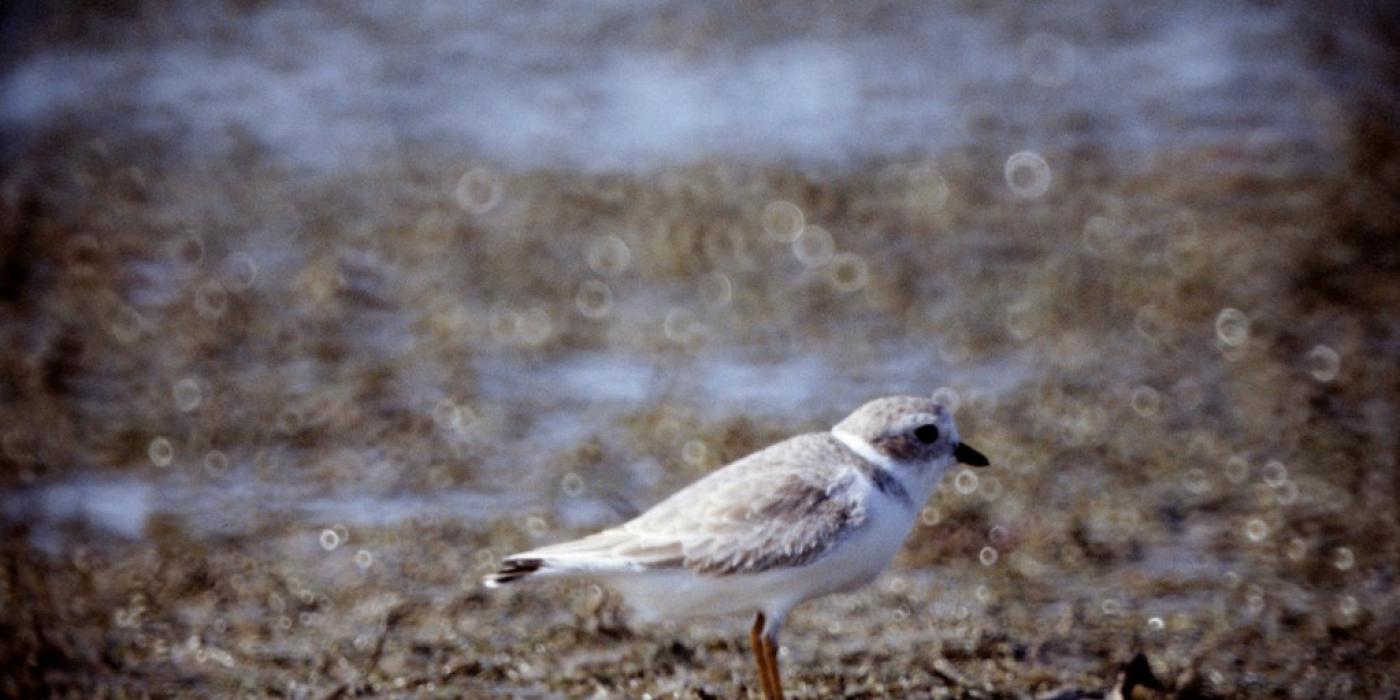Protecting Piping Plovers in the Great Lakes
In 2022, the Smithsonian Migratory Bird Center will begin a new research project to help protect endangered piping plovers from predation by merlins. Piping plovers that breed in the Great Lakes are one of the most endangered bird populations in North America. The wild population crashed to just 17 pairs in 1986, as a result of habitat modification and loss. The plover population has grown over the past few decades thanks to management by state and federal agencies, but they are still critically endangered. Just over 70 pairs of plovers were counted in 2021.
Piping plovers appear to be facing a new problem — predation by a small falcon, the merlin. Merlins primarily eat small birds, such as songbirds, but occasionally take larger prey. They were historically rare in the Great Lakes Basin, but their populations have dramatically increased in the past 30 years. Their distribution in the Great Lakes is almost entirely coastal, overlapping completely with piping plover populations. Since 2005, merlins are suspected of having killed at least 50 adult piping plovers and likely many more young birds. They are also thought to have extirpated (completely removed) piping plovers from other former breeding sites in Michigan.
Researchers from Michigan State University and the University of Minnesota used population models to show that controlling merlin and other common nest predator populations at the same time would reduce the piping plover's risk of extinction. Their models show that this is the only method which will lead to plovers to meeting their species recovery goals.
Managers are searching for ways to control merlin populations to protect piping plovers and recently asked the Smithsonian Migratory Bird Center for support. Ecologist Nathan W. Cooper is leading the research project. In 2022, SMBC scientists will begin to capture merlins and move them hundreds of miles away. The process of moving animals from one place to another is called translocation. Using state-of-the-art satellite tracking technology, they will see if the translocated merlins come back and if this nonlethal method can effectively control their populations in the Great Lakes.
They will also track merlins outside of plover breeding areas to learn how far the falcons travel to hunt, which will help inform the scope of future management. Merlins are not a well-studied migratory bird. Along the way, Cooper and colleagues hope to learn much more about the falcons by collecting data about their breeding biology, space use, migratory routes and wintering areas.











